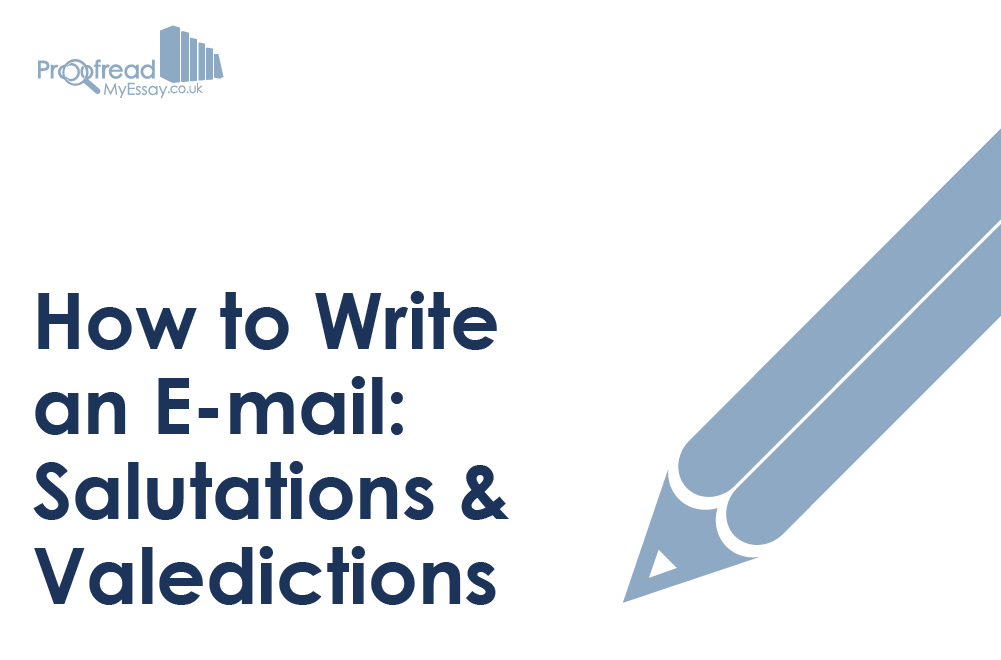When writing e-mails it’s vital to use appropriate salutations (i.e. openers) and valedictions (i.e. closers). This applies both at university and in the workplace, as well as in life generally!
As such, knowing how to use different e-mail salutations and valedictions in various contexts will help you to present yourself as professional and articulate at all times.
Salutations (Hello!)
A salutation, in this context, is the greeting at the start of a letter or e-mail. In informal messages, such as an e-mail to a friend, this could simply be ‘Hi there!’ or something equally familiar.
A formal e-mail, on the other hand, demands a formal salutation, which usually takes the form of ‘Dear [Recipient’s Name]’ followed by a comma. Your e-mail then continues on the following line.
Ideally, you will know the recipient’s preferred title (e.g. Mr, Mrs, Dr). If not, just use their full name:
- Dear Professor Tuesday,
- Dear Ms Chin,
- Dear Frederick Habsburg,
If you don’t know the name of the person you’re e-mailing and can’t find it out, there are alternatives. One is to address the recipient by their job title (e.g. ‘Dear Managing Director,’).
If you don’t know this either, you could use something generic like ‘Dear Sir/Madam’ or ‘To Whom It May Concern’. However, with the internet making it easy to research your recipient before sending an e-mail, this shouldn’t be necessary.
Valedictions (Goodbye!)
The valediction is a phrase you use to sign-off your e-mail, usually followed by your name. For example, one common sign-off used in emails is ‘Kind regards’:
Find this useful?
Subscribe to our newsletter and get writing tips from our editors straight to your inbox.
Dear Mr Landis,
Thank you for your offer. Unfortunately, we do not think an office is an appropriate home for a fully-grown hippopotamus, so we will have to decline.
Kind regards,
Dr Bob Bobbington
However, as with salutations, in formal e-mails you should make an effort to pick the right valediction:
- ‘Regards,’ and ‘Kind regards,’ – Good, all-purpose valedictions for day-to-day use, although some consider them a little formal.
- ‘Best wishes,’ and ‘Best,’ – Slightly less formal than ‘Kind regards’, but still appropriate for business e-mails or contacting someone you already know a little.
- ‘Thanks,’ and ‘Warm thanks,’ – Appropriate if someone has done something for you.
In particularly formal situations, such as corresponding with an authority figure, you might need to use an even more formal valediction:
- ‘Yours respectfully,’ – Useful for contacting someone in a position of authority.
- ‘Your sincerely,’ and ‘Yours truly,’ – Formal valedictions traditionally used in letters, but now considered a little old-fashioned.
- ‘Yours faithfully,’ – Used when you don’t know the name of the recipient.
